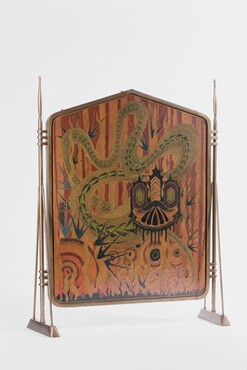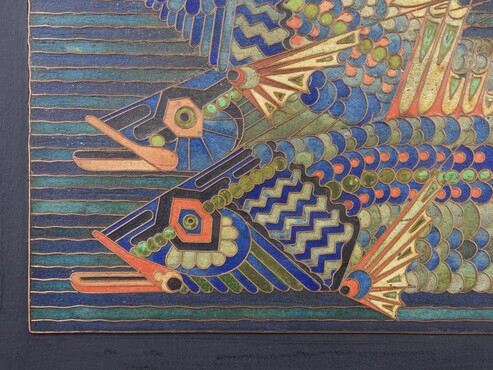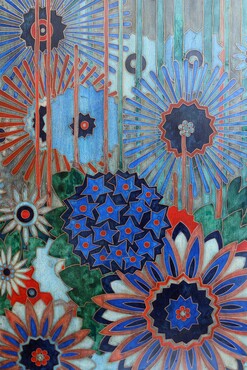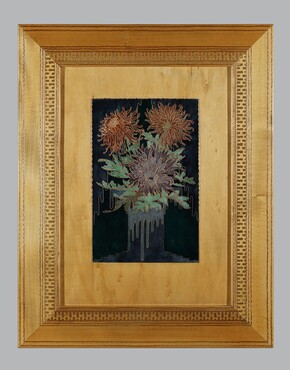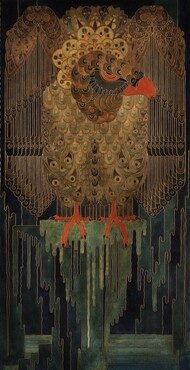Ontdek de collectie
Kunstmuseum Den Haag has a treasure chamber of over 160.000 pieces of art. Here we work on making the highlights from this collection available online.
Cloisonné
Marie Kuyken
Marie Kuyken (1898–1988) has remained one of the Netherlands’ most neglected designers, in part because so few of her colourful and imaginative ‘cloisonné panels’ have survived. But that is about to change. Thanks to recent detective work, several of her designs have resurfaced. For the first time in a hundred years, Kunstmuseum Den Haag has assembled around twenty of these remarkable panels in the small exhibition Cloisonné – Marie Kuyken.
These so-called ‘cloisonné’ panels were made in the period 1918-22 by Wilhelm A. Kuyken Jr., a small family firm founded in Haarlem in 1904. It initially specialised in copper binding stamps, and printing plates for textiles, linoleum and wallpaper, but when orders from neighbouring countries dried up during the First World War, Kuyken was forced to develop a product aimed at the domestic market. Assisted by his brother-in-law, the sculptor Hendrik van den Eijnde, he turned to the technique of hammering and punching flat copper strips into wood to make decorative panels and boxes.
Marie Kuyken
The images were designed Wilhelm’s talented eldest daughter, Marie Kuyken (1898-1988), who graduated from Haarlem’s renowned School of Applied Arts in 1917. Her stylised depictions of flowers and animals are not always identifiable as a specific species and indeed some of her images sprang entirely from her imagination. Together with the enchanting effect of the glistening copper strips, and titles such as Contemplation and Rhythm and Illusion, they lend the panels a poetic atmosphere. Marie designed around forty images, each of which was probably not executed more than six times. The panels are therefore quite rare: the total production is estimated at between 150 and 200 examples, of which around fifty panels are known to have survived.
Marie and her father preferred to see the panels incorporated in a cabinet, a frieze, a mantelpiece or in wall panelling. With the exception of a few special commissions, there was sadly limited interest in this idea. The exhibition features two of these unique commissioned pieces: an elegant walnut bookcase and a fabulous fireplace screen.
Text continues below images.
Cloisonné
The term ‘cloisonné’ refers to the historical technique of email cloisonné (literally partitioned enamel), which also employed metal strips, but on a metal background. The strips make up the image and prevent the different coloured enamel powders that fill the gaps between the strips (cloisons) from melting together in the kiln. Kuyken hammered the copper strips into wooden panels and filled the areas between the cloisons not with enamel but with a paste of plaster and gelatin, coloured with watercolour. This technique meant that the panels did not need to be fired in a kiln. Kuyken patented his process in 1919.
The cloisonné panels were well received, but their high quality and time-consuming craftsmanship proved to be costly, a consequence of post-war inflation that resulted in a sharp rise in wages. In 1923, the company was forced to move to Dilbeek, near Brussels, where it focused on other products, and ceased production of cloisonné panels with copper strips.
The lavishly illustrated catalogue Marie Kuyken - Cloisonné (in Dutch) will be published by Uhlenbeck Uitgevers (ISBN 978-90-831736-0-3).

